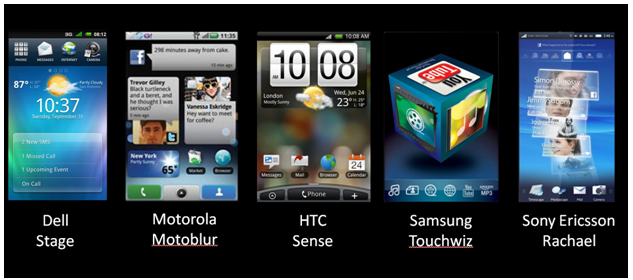The wireless industry is a fickle beast. Update too often or do things in an overly innovative way and people (including this author) scream “fragmentation.” Wait too long between refresh cycles (WinMo 6.5) or roll out an update that is insufficiently different from past releases (Symbian ^3) and the villagers are quick to grab their torches and pitchforks as well. Clearly there are benefits to enhancements, better features and shiny new baubles but there is also merit in a certain amount of stability. Let’s face it, anyone who has just bought a new toy is unlikely to be filled with joy and delight to find that the new precious is instantly obsolete.
More after the break.
In the good old days of Windows Mobile and Symbian, OEMs were able to take their time as update cycles were less frequent (see table below). For example, with S60, originally released in 2001, updates have come over two to three years. With Windows Mobile, the cycle was more like 13 months. Android has been more like six months between updates, four to six times faster than Symbian and at least twice as fast as Windows Mobile.

This is compounded by the fact that OEMs are fond of crafting their own UIs to ride on top of Android, either as a way of providing additional features (like Motorola’s social integration in Blur) or just as a way to provide differentiation. One of the reasons this is a challenge is that these UIs are often fairly involved affairs (HTC Sense, for example, goes beyond just being a UI to add enhanced Exchange integration) that take some leadtime to develop and port to new versions of the underlying OS.
In the end it usually means that Google will announce a tasty new sweet (Cupcake, Donut, Éclair, Froyo etc) and the tech/blogger/early adopter/prosumer user community will unanimously agree that the new version is the very best thing since sliced bread. In many cases they will be right. For example, the latest and greatest Android, 2.2 aka Froyo, brings a huge increase in performance thru the introduction of JIT compilation to the Dalvik VM. 2.0/2.1 brought multitouch. 1.6 brought VPNs, a better Android Market and a device wide search feature. 1.5 introduced an onscreen soft keyboard, homescreen widgets, better Bluetooth and a host of other features. So far, each new version of Android has brought a number of cool new features that reasonable people would want.

Meanwhile, phones that are shipping now have been in the pipeline for a while, engineered and built on an older version of the base OS.
Where does this leave the consumer? In most cases, the consumer is left wanting an update. Experience shows that most of them will want that update over-the-air, which creates problems for some of the new Android devices as the update packages are sometimes larger than existing infrastructure, either at the OEM or at the service provider, can manage. This leaves two choices, either deliver updates via cables, an often risky and complex affair, or upgrade infrastructure to handle the demands imposed by the larger package sizes required by Android.
Cable updates introduce a great number of dependencies. Does the user have the right desktop OS? Right version? Of course you need the right cable. Oh, wait, be careful, some of the engineers have said that stuff like virtual machines etc can be problematic, be careful. Got the right USB drivers? OK, now just be real careful you don’t disconnect during the update, might brick your phone. FOTA, on the other hand, tends to be far easier and more robust. Pull the battery? No problem, put it back in and the update resumes. No USB drivers, no needing another system running the correct OS, it just works.
Speaking of which, I hope I get my Froyo update for my Nexus soon!
Trackback: TMCNet






Leave A Comment